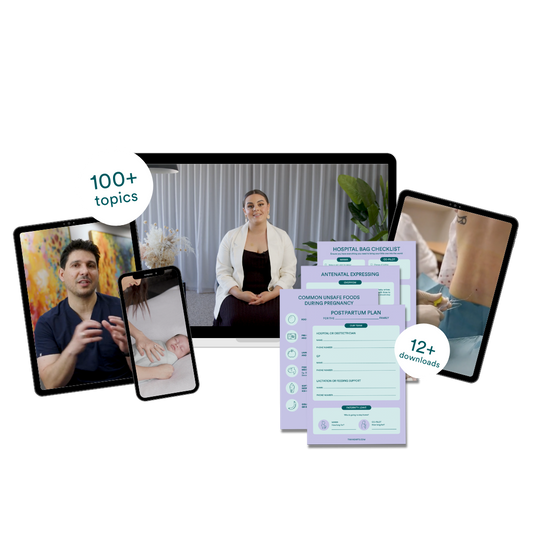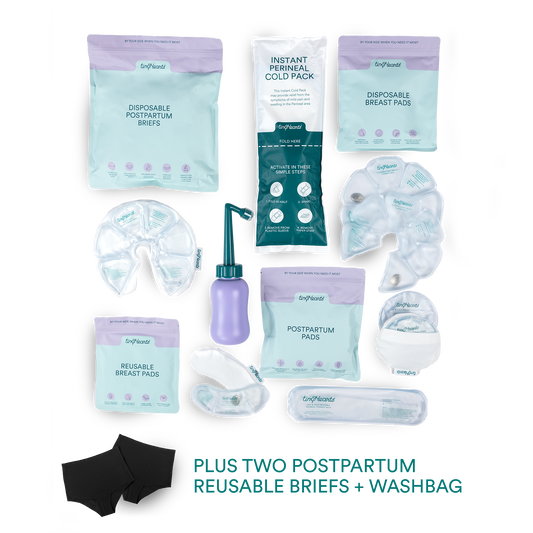One of the most common questions we get asked, and some of the most important information you'll ever learn, is when to start CPR. There are two key indicators to look for that will tell you if you need to start CPR.
You are starting CPR if your little one is:
Unconscious
and
Not breathing normally
Starting CPR immediately after identifying that your little one is unconscious and not breathing normally dramatically increases the chances of survival.
If you've done a first aid course before, you might be questioning that information because it used to be unconscious and not breathing, but this guideline has changed. The reason for the change was based on research that found if we started CPR when a person was unconscious and not breathing normally, rather than waiting until they were unconscious and not breathing at all, the chances of survival were higher.
To make it really clear; UNCONSCIOUS + NOT BREATHING NORMALLY = START CPR
BUT WHAT IS CONSIDERED NORMAL BREATHING?
Place your hand on your belly for 10 seconds and breathe in and out a few times. Do you notice how your breathing is at a nice, even pace? Notice how it's not going really fast? And it also doesn't seem like you're holding your breath for long pauses, either? Do you see how your breathing is also effortless and not really noisy? And you're not making strange noises? That's normal breathing, and it's exactly what you'd expect from your little one too. It's the breathing that you'd expect to see every other day when your little one is well.HOW TO CHECK FOR NORMAL BREATHING?
To check if your little one is breathing normally, you use three techniques, all at the same time and hold it for 10 seconds:Look
Listen
Feel
HERE ARE THE STEPS YOU'LL FOLLOW:
• Get down to the level of your little one.• Place your hand on their belly.
• Place your ear slightly above their nose and mouth.
• Look at their belly.
• Hold this for 10 seconds.
You're looking for the rise and fall of bub's chest with each breath.
You're listening for breathing sounds from their nose and mouth.
You're feeling for the rise and fall of their chest, as well as any air coming out of their nose and mouth with each breath.
We hold for 10 seconds because newborns have irregular breathing, so this makes sure that you're getting a really good idea of what their breathing is like.
IF YOU FIND THEY ARE:
Conscious and breathing normal = good! That's what we expect all the time.Conscious and not breathing normally = seek medical attention or call 000 for an ambulance.
Unconscious and breathing normally = Recovery position and wait for the ambulance to arrive, remembering you would've called an ambulance prior to checking for breathing as part of DRSABCD.
Unconscious and not breathing normally = begin CPR.
LET'S LOOK AT SOME EXAMPLES TO TEST YOUR KNOWLEDGE:
Imagine you've walked in, and your little one is lying on the ground. You know DRSABCD, so you've checked for danger, worked out they're unconscious, sent for help and checked the airway. Now you're up to checking their breathing.EXAMPLE #1
You follow the instructions above and see your little one unconscious and breathing like this:Is this normal or abnormal breathing?
Abnormal; It's too noisy, and they don't normally breathe like this.
EXAMPLE #2
What if they're unconscious and breathing like this?Is this normal or abnormal breathing?
Abnormal; It's too fast, and they don't normally breathe like this.
EXAMPLE #3
But what if they're unconscious and breathing like this?From 1:16- 1:34
Is this normal or abnormal breathing?
Abnormal; It's too slow, and they don't normally breathe like this.
So, if your little one is unconscious and breathing:
• Too fast
• Too slow
• Too noisy
• Not at all
• Or you're not sure
You are starting CPR.
BUT WHEN DO YOU STOP CPR?
There are four times that you can stop performing CPR.1. Your little one shows signs of life.
Signs of life are things that tell you your CPR was successful and the person is beginning to recover. Examples include:
Talking
Coughing
Vomiting
Moving
Opening their eyes and looking around or focusing on objects/ faces
2. If someone more qualified arrives and takes over or tells you to stop.
An example of this may be if you're doing CPR, and the paramedics who arrive take over or tell you to stop performing CPR. At that point, a more qualified person has instructed you on what to do, so you can stop CPR.
3. You can't physically keep going.
CPR is physically exhausting, and anyone who has either performed or practised CPR can tell you that. There's also research to say that as you get tired, the quality of CPR decreases. If you're doing CPR for a while, while waiting for the ambulance, there may come a point where you can't physically keep going. If you reach this point, it's ok to stop. Keep in mind it's easy to teach someone CPR if you desperately need it. "Press here with one hand, go harder, go faster, press deeper" is all it takes.
4. A danger presents itself, and it's no longer safe for you to continue performing CPR.
We all know that dangers can present all the time, particularly if you're in an uncontrolled or public environment. If you're doing CPR and a danger presents itself, you need to remove or control it, remove yourself [and the patient if you can] until it's safe, or wait for someone more qualified to deal with it [in situations such as a fire breaking out]. Let's look at an example to explain this one a bit more.
Say you're doing CPR on a little one at the park, and an unfriendly dog runs up. It's no longer safe for you to continue performing CPR, so you'd stop, remove the dog, or ask someone to remove the dog if there are bystanders, and then continue CPR.
If you're performing CPR, you are in a life-or-death scenario. Knowing where, how, how fast, how many hands to use, breathing requirements, ratio and depth of CPR are critical to providing good quality CPR that can save a little life. Join our proactive parent tribe by signing up for our Tiny Hearts baby + child first aid course, and let us teach you the skills you need.








